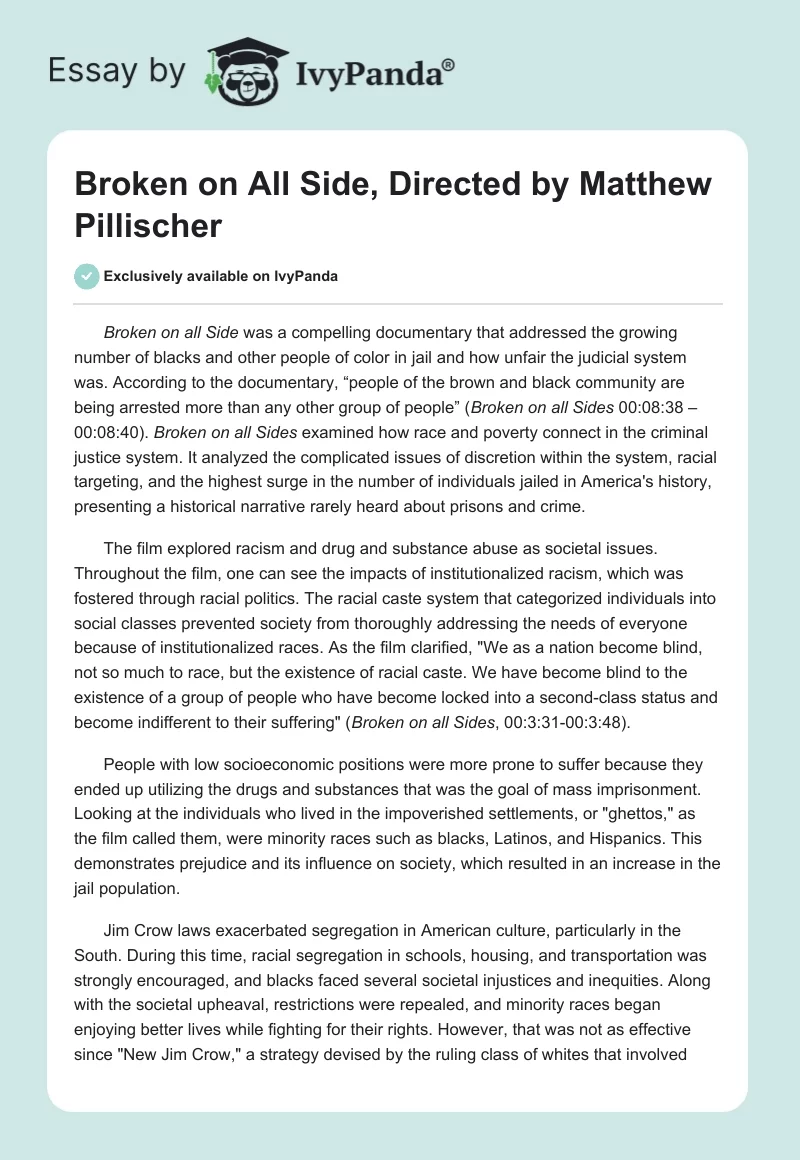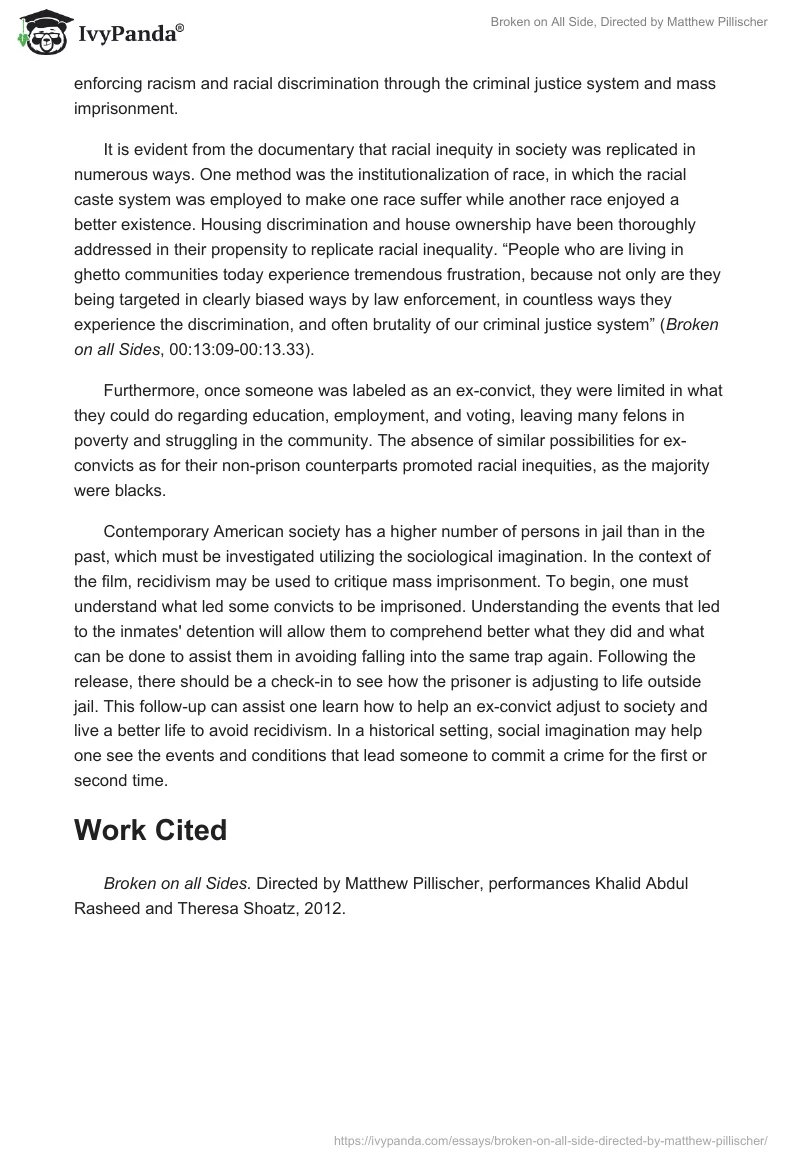Broken on all Side was a compelling documentary that addressed the growing number of blacks and other people of color in jail and how unfair the judicial system was. According to the documentary, “people of the brown and black community are being arrested more than any other group of people” (Broken on all Sides 00:08:38 – 00:08:40). Broken on all Sides examined how race and poverty connect in the criminal justice system. It analyzed the complicated issues of discretion within the system, racial targeting, and the highest surge in the number of individuals jailed in America’s history, presenting a historical narrative rarely heard about prisons and crime.
The film explored racism and drug and substance abuse as societal issues. Throughout the film, one can see the impacts of institutionalized racism, which was fostered through racial politics. The racial caste system that categorized individuals into social classes prevented society from thoroughly addressing the needs of everyone because of institutionalized races. As the film clarified, “We as a nation become blind, not so much to race, but the existence of racial caste. We have become blind to the existence of a group of people who have become locked into a second-class status and become indifferent to their suffering” (Broken on all Sides, 00:3:31-00:3:48).
People with low socioeconomic positions were more prone to suffer because they ended up utilizing the drugs and substances that was the goal of mass imprisonment. Looking at the individuals who lived in the impoverished settlements, or “ghettos,” as the film called them, were minority races such as blacks, Latinos, and Hispanics. This demonstrates prejudice and its influence on society, which resulted in an increase in the jail population.
Jim Crow laws exacerbated segregation in American culture, particularly in the South. During this time, racial segregation in schools, housing, and transportation was strongly encouraged, and blacks faced several societal injustices and inequities. Along with the societal upheaval, restrictions were repealed, and minority races began enjoying better lives while fighting for their rights. However, that was not as effective since “New Jim Crow,” a strategy devised by the ruling class of whites that involved enforcing racism and racial discrimination through the criminal justice system and mass imprisonment.
It is evident from the documentary that racial inequity in society was replicated in numerous ways. One method was the institutionalization of race, in which the racial caste system was employed to make one race suffer while another race enjoyed a better existence. Housing discrimination and house ownership have been thoroughly addressed in their propensity to replicate racial inequality. “People who are living in ghetto communities today experience tremendous frustration, because not only are they being targeted in clearly biased ways by law enforcement, in countless ways they experience the discrimination, and often brutality of our criminal justice system” (Broken on all Sides, 00:13:09-00:13.33).
Furthermore, once someone was labeled as an ex-convict, they were limited in what they could do regarding education, employment, and voting, leaving many felons in poverty and struggling in the community. The absence of similar possibilities for ex-convicts as for their non-prison counterparts promoted racial inequities, as the majority were blacks.
Contemporary American society has a higher number of persons in jail than in the past, which must be investigated utilizing the sociological imagination. In the context of the film, recidivism may be used to critique mass imprisonment. To begin, one must understand what led some convicts to be imprisoned. Understanding the events that led to the inmates’ detention will allow them to comprehend better what they did and what can be done to assist them in avoiding falling into the same trap again. Following the release, there should be a check-in to see how the prisoner is adjusting to life outside jail. This follow-up can assist one learn how to help an ex-convict adjust to society and live a better life to avoid recidivism. In a historical setting, social imagination may help one see the events and conditions that lead someone to commit a crime for the first or second time.
Work Cited
Broken on all Sides. Directed by Matthew Pillischer, performances Khalid Abdul Rasheed and Theresa Shoatz, 2012.


